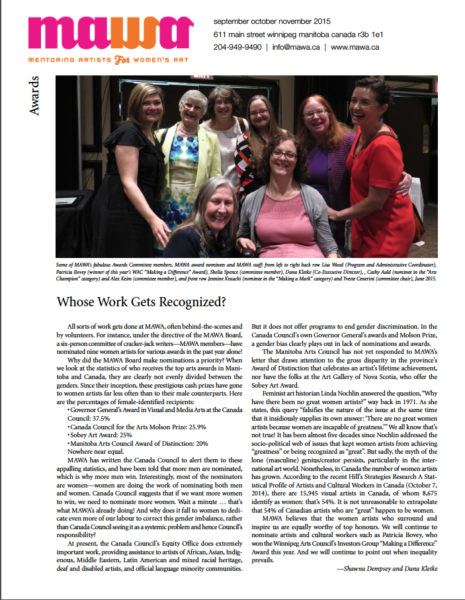
Shantell Martin in action!
Artists of…art?
by Lwam Eyassu
When we hear of an up and coming exhibition, naturally we become curious about the artists themselves. Where did they study? Where have they had their work shown? What are the conceptual frameworks of their practice? In learning any details, we subconsciously begin to form a confirmation bias. The more clues we have, the more assumptions we make. For example, if we find out that the artist’s name is Yayoi Kusama or that she is a photographer from Kenya, what are the first visions that come to mind?
In the process of deciphering who this artist is, we are also simultaneously binding the artist to a category. Aboriginal and visible minority artists are alarmingly under-represented in the art world. Are we limiting these artists’ successes and artistic growth by categorizing their works? If so, this habit is racist at worst, and lazy at best.
During my years in the art department at Northern Kentucky University I was extremely aware of my colour and ethnicity. Early into my education, I realized that my work received attention and praise if it was foreign to others or represented my blackness. As a person of colour, I was an anomaly in all of my courses and sensed that I had been assigned a role. I felt a need to live up to the perceptions my peers and professors had of me. For all my final projects, I exclusively photographed Eritrean events and traditional ceremonies. Feeling my obvious difference, I worked hard to embody other people’s idea of the “black woman artist”, a stereotype that has plagued many others.
After my last semester in college, I spent a challenging summer at MAWA with various visiting artists. During this time, I became conscious of the self-imposed boundaries I had placed on myself and realized how I had participated in this harmful tendency to racially label my artwork as well as that of others. I began to ask, “Who is responsible for introducing and maintaining this practice? Is it the viewer, the artist, or both?”
Do we give women of colour space to explore their creativity and push their artistic limits beyond mainstream, hegemonic ideas of “otherness”, the exotic, and all of the other baggage we adhere to them? Do we further stereotype the works of LGBTQ and disabled women of colour, or ignore their specific voices entirely?
There are many successful women artists of colour whose artwork doesn’t focus on race, such as Caitlin Cherry, Ghada Amer, Julie Mehretu and Shantell Martin. Martin is a brown-skinned artist who creates dream-like pen-and-ink drawings and sprawling drawing-based installations, almost exclusively in black and white. She once said, “When you use colour, in a way you’re directing people where to look. When you have something that is very black and white, ten people look at it and they’re all going to be drawn to a different place.… I feel like I’m doing what I’m meant to do, and how I’m meant to be connecting with the world”. I believe this quote corresponds with the way many women artists of colour feel. We have the right to connect with the world through our art in our own way, without carrying the expectations of others on our backs.
The only way we can effectively encourage equity and inclusion in the art world is if we start to carefully consider how we perceive other artists, and realize how our perceptions impact them and their art. If an artist has a complexion that is not native to Europe, it doesn’t give us the right to label them or their works. If a woman is an artist, she is just that. Like Caitlin Cherry, Ghada Amer, Julie Mehretu and Shantell Martin, I may be a person of colour, but I am an artist of art.
Lwam Eyassu is a recent graduate of Northern Kentucky University. She currently mentors youth at the Eritrean Community Centre in Winnipeg.

